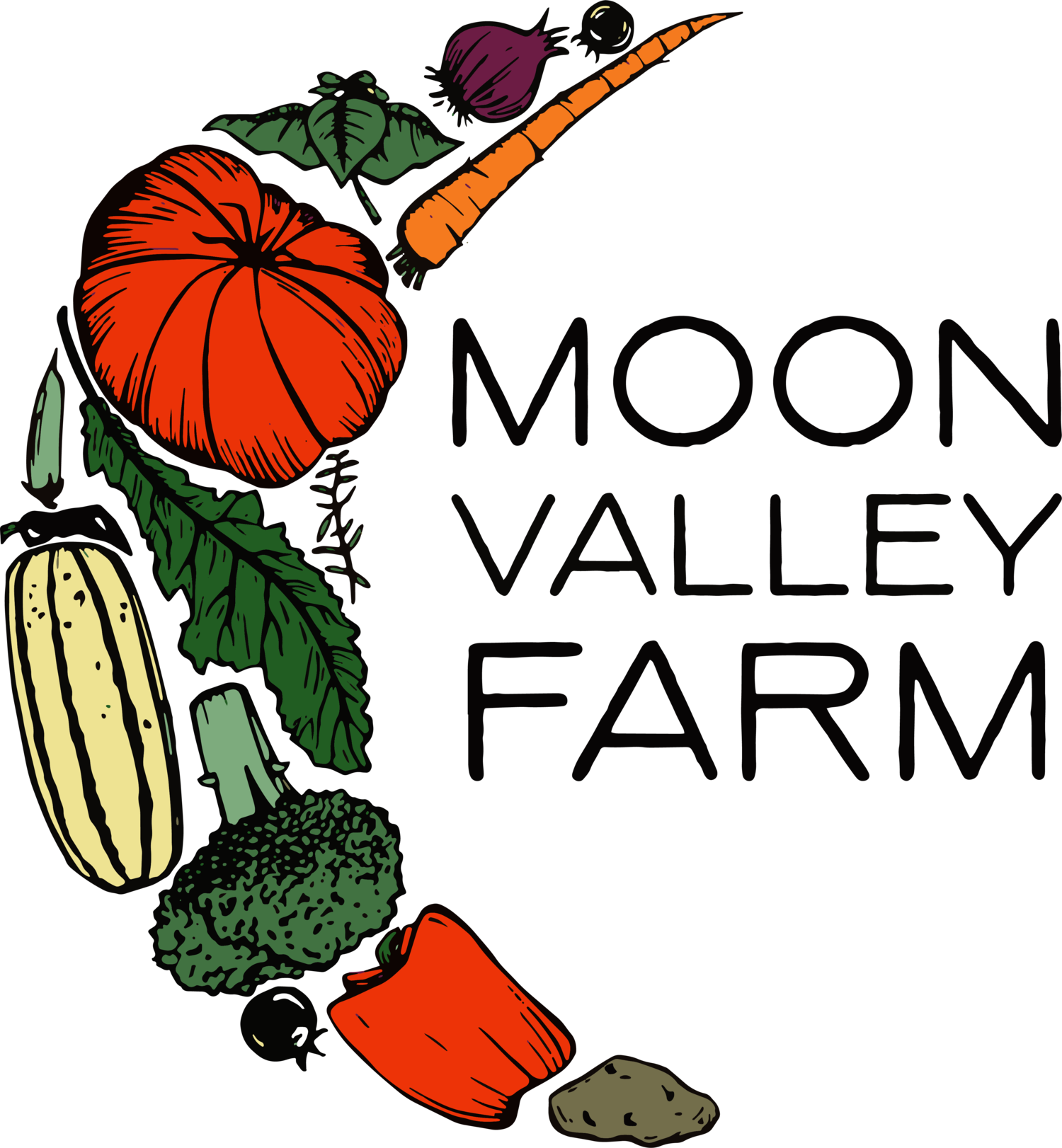Our Long-Term Soil Health Strategy
Growing food is an extractive process. Think about it: we pull nutrients and minerals from the soil, add water and sunshine and transform them into food - the energy that we need to survive.
The mission of the organic farmer - and the responsible conventional farmer – is to grow food in a way that supports the financial needs of the farm, does not deplete the soil BUT regenerates the soil. This requires a very purposeful long-term strategy. Moon Valley Farm’s mission is to steward the soil in and leave it in MUCH better condition when we’re gone.
Below is Moon Valley Farm’s long-term soil health strategy:
GOAL: To increase soil organic matter:
WHY? Soils that have higher soil organic matter have higher Cation-Exchange Capacity (CEC). This means plants have a greater capacity to use the nutrients that are in the soil resulting in a dramatically reduced risk of added nutrients leaching into waterways. Plants access what nutrients are already there and greatly limits the risk of polluting! Win-win.
TACTICS:
Limiting tillage
Adding compost
Turning in spent plant matter
Adding mulches
Cover cropping and incorporating
GOAL: To learn what our soil HAS, what our plants NEED, which results in the capability to add exactly the right amount of nutrients and fertilizers:
WHY? This KNOWLEDGE optimizes plant health and nutrient density that cuts costs and cuts the pollution of our waterways with excessive fertilizers.
TACTICS:
Test the soil every year!
Test our compost every application
Consult with soil scientist professionals to calculate any additional nutrients the plant needs
GOAL: To protect the soil from erosion. This is an important responsibility that ALL farmers have in land stewardship. Climate Extremes make this more difficult to execute. The current crisis in California - years of drought followed by dangerous deluges - highlights how important this task is for protecting our topsoil – which is our ability to produce food.
Why? Topsoil is a precious resource! Did you know that it can take between 500-1000 years to grow just ONE INCH of topsoil? We only have around 5 inches of topsoil - the power behind a heavy rain event, or a heavy wind storm could deplete our precious topsoil in a flash.
TACTICS:
Plant permanent green lanes between every field. We plant a mix of ryes and clovers to always be green and rooted in our pathways, which slows down the flow of heavy water.
Plant on the contours. We have slopey fields, which means we have to be extra careful on where our water flows in rain events. We have seeded our waterways with permanent perennials, and are planning to berm and swale around them to further protect our fields this year.
Keep the soil covered as much as possible. Between mulching and cover-cropping, it’s our goal to have all the soil covered as many days of the year as possible!
GOAL: To rotate our crops!
WHY? The main benefits of Crop Rotation are: planting different types of crops on different fields each year minimizes the risk of depleting the same nutrients year after year from the soil and organic farmers minimize our disease and pest-deterring inputs because many of our pests and diseases live in the soil.
TACTICS:
To maximize the benefits of a crop rotation strategy, we look at crops from several different angles.
Is a crop a heavy feeder or a light feeder? We avoid planting two heavy feeders in a row, so that it’s not hard on the soil
Where does a plant get it’s nutrients from within the soil profile? Is it deep rooted, or shallow rooted? We avoid planting two of the same in a row, to allow time for one to rest and replenish
What other benefits can successive planting plans have? For example, brassica family crops (like mustards, broccoli and kale) are a natural fumigant, meaning that they suppress bad bacteria and nematodes. It is strategically important to use natural advantages like this in our crops favor, and plant something susceptible to bacterial disease (like cucumbers and summer squash) after a brassica crop.
GOAL: To increase biodiversity on the farm:
WHY? Increased biodiversity translates directly to increased resilience – especially during times of climate change.
TACTICS:
Plant trees and shrubs for windbreak, home for pollinators, birds and mammals
Plant permanent wildflower meadow for snakes, insects, butterflies
Plant perennial flowering crops for insects
Put up purple martin houses (we have 3!) to attract and retain these pest-eating birds
Put up bat houses to encourage bats to live here and eat insects
Have brush piles for snakes




